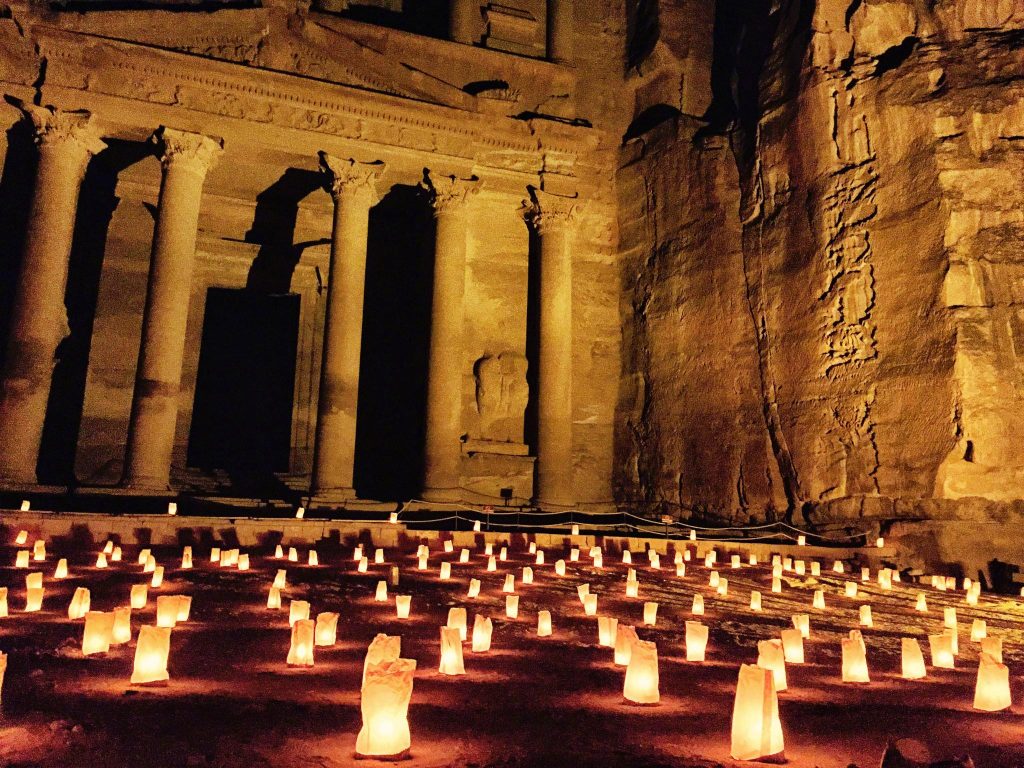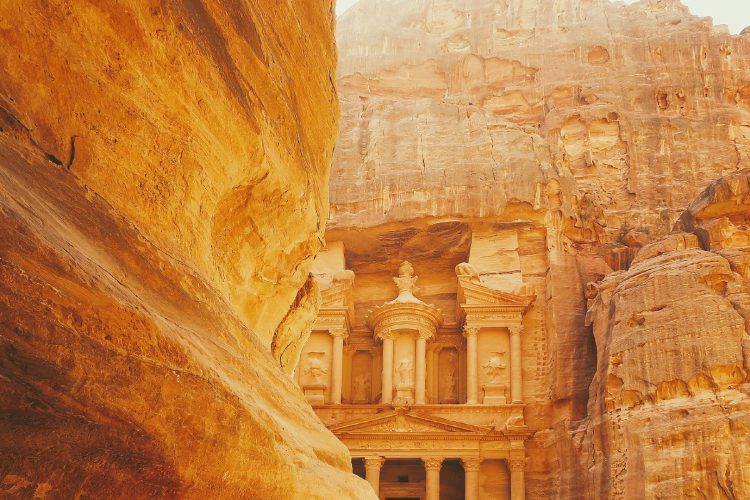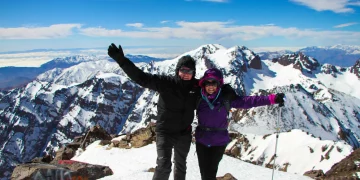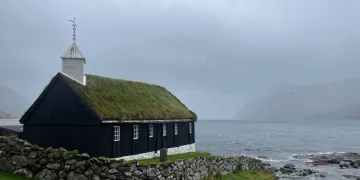The Allure of Petra in History
The Rise and Fall with Trade
“Petra, a rose – red city, half as old as time.” Petra’s fame, in part, owes to the poem “To Petra” created by the British poet John Burgon in 1845. Today, when Petra is mentioned, one might think of the Holy Grail’s location in “Indiana Jones and the Last Crusade”, the burial place of the Primes in “Transformers: Revenge of the Fallen”, as well as in games like “Civilization VI” and “Overwatch”. Petra has become increasingly well – known, yet there are still numerous mysteries surrounding it waiting to be unraveled.
Petra was a significant node on the ancient Silk Road. According to the Metropolitan Museum of Art in New York, “The fame of the Nabataean Kingdom reached as far as the Han Dynasty in China, where Petra was called ‘Li Kan’ (transliteration).” Petra was the capital of the Nabataean Kingdom, with a population of twenty to thirty thousand during its heyday. Another possibility is presented in “Weilüe – Xirongzhuan”: “To the south of Qielan and Fanfu, there are Jishi. To the south of Jishi, there is a great sea, from which corals and pearls come.” “Weilüe – Xirongzhuan” records the mission of Gan Ying sent by Ban Chao, the Protector – General of the Western Regions in the 9th year of Emperor He of the Han Dynasty (97 AD). The “great sea” here is believed to be the Red Sea. By reverse inference, “Jishi” is likely to refer to Petra, as “petra” means rock. Moreover, around 97 AD was precisely when Petra gained great international fame.
In any case, Petra was located at the intersection of several precious trade routes connecting China, India, the Arabian region, and the Mediterranean area, making its geographical position extremely important. This was one of the reasons why the Nabataeans chose it as their capital.
The Nabataeans were a nomadic people who emerged on the Arabian Peninsula around 400 BC. In the following centuries, the Nabataeans, with their knowledge of the desert, served as “desert porters”, transporting large quantities of frankincense, myrrh, spices, and Dead Sea asphalt. Later, they monopolized the long desert trade routes and taxed passing camel caravans. These caravans could stop at the resting points provided by them to obtain water supplies. Although the Nabataeans became wealthy and spent a huge amount of money to build the magnificent Petra, not everyone recognized them. The ancient Roman historian Diodorus described the Nabataeans as “plunderers” and “pirates”.
We know very little about the Nabataeans as they did not leave much of their own written history. In 107 AD, the Romans incorporated Petra into their rapidly expanding empire. In the 3rd century AD, international trade routes gradually shifted to the sea, and Petra, as a land transportation hub, began to decline. The Nabataeans quickly disappeared into the sands of history, and where they went remains a mystery. However, today’s Petra has become an eternal witness to the great power, abundant wealth, and elegant culture of the Nabataeans.

The Magnificent Khazneh Temple
The Siq is the only entrance to Petra. This winding and cliff – lined passage is about 1.5 kilometers long, 2 – 7 meters wide, and the cliff walls on both sides are up to 80 meters high. After walking through the highly oppressive Siq, what greets you is the Khazneh Temple, which is nearly 40 meters high and embedded in the cliff wall. Under the huge visual impact, almost every first – time visitor here will have the same shocked expression. But did the Nabataeans build such a magnificent Khazneh Temple just for show and to intimidate?
The Khazneh Temple means the Treasury of the Pharaoh. The Bedouins living in this desert believe that it was once the treasure – hiding place of the Egyptian pharaohs. This is also the main reason why the Bedouins intentionally hid it from outsiders after Petra’s decline. In fact, the Khazneh Temple was not built by the Egyptians, nor is it a treasury. The Nabataeans chiseled it bit by bit on the vertical cliff with simple tools such as pickaxes and long – handled axes.
This was a massive project. The Nabataeans reversed the traditional bottom – up construction method. First, they chiseled a flat “stone canvas” on the uneven cliff wall, and then carefully carved the appearance of the temple from top to bottom. Starting construction at a height of about 40 meters was already difficult, and they also had to ensure that there were no mistakes during the carving process. The facade of the temple is carved with god – like figures, as well as animals, leaves, and flowers. It can be clearly seen that it combines the architectural styles of Greece, Rome, etc. Some people believe that the Nabataean Kingdom was showing its friendly and open – minded attitude to the outside world.
Perhaps there’s more to it. The Nabataeans were described as “nouveau riche” in history. A more reasonable inference is that they were no longer satisfied with being the absolute kings of desert trade but also hoped to secure a more fitting and important position on the international stage. Therefore, they were more like using the Khazneh Temple and Petra to proclaim their powerful rise to the world.
Apart from the possible symbolic meaning, what is the use of the Khazneh Temple? Is the answer inside the temple? Tourists are now no longer allowed to enter the temple. However, documentaries about Petra show that compared to the magnificent exterior, the interior of the temple is surprisingly small, empty, and plain.
It was not until a significant archaeological discovery in 2003 that people seemed to get closer to the truth. Through excavations under the temple, archaeologists discovered 4 tombs and 11 human remains. After analyzing the funerary objects, they believed that the Khazneh Temple might have been built during the reign of Aretas IV. Aretas IV’s reign was roughly from 9 BC to 40 AD. Under his rule, the Nabataean Kingdom reached a peak, and more than 80% of the Nabataean coins were stamped with Aretas IV’s portrait. But whose tomb the Khazneh Temple is, whether Aretas IV’s or that of a royal family member, requires more evidence.
The Mastery of Water Management
When visiting Petra, merely admiring its magnificent architecture is far from enough. The Nabataeans were not only great architects but also had great achievements in the field of water conservancy. It can even be said that the water resource management system is the Nabataeans’ greatest achievement.
In the formation and development of ancient civilizations, water is an essential element, especially for the Nabataeans who survived in the desert. Petra is surrounded by mountains and is at the lowest point among them. During the rainy season from November to March each year, rainwater from all directions can converge here. Collecting all of it can provide water for the daily use of the people. However, this also brings the risk of flooding. The most recent one was in December 2022, when the surging mountain torrent, carrying gravel, rushed through the Siq and directly reached the entrance of the Khazneh Temple.
The Nabataeans were well aware of this. They established a complete set of water collection, management, and storage systems using canals, ceramic pipes, and underground reservoirs, directly transporting almost every drop of surface water in the surrounding area to Petra. The best – preserved one today is an 8 – kilometer – long ceramic pipeline. It consists of tens of thousands of handmade ceramic pipes, and the joints are glued with waterproof cement. Moreover, this pipeline always maintains an inclination of about two degrees, so that the water pressure will not be so great as to cause the pipeline to burst.
In addition, on the outskirts of the city, the Nabataeans built dams to change the river course. In the city, they used terraces to block the runoff on the hillside. There are also hundreds of reservoirs and water tanks for water purification and pressurization.
Such water – control ability became the Nabataeans’ trump card in dominating the desert. On the trade routes they controlled, they collected and stored water through secret water – collection systems and provided it to passing caravans, thus earning huge profits. The ancient Greek scholar Herodotus mentioned in his “Histories” that he believed the Nabataeans could find water anywhere in the desert.
Today, these water – storage systems are still scattered throughout the desert, and a large part of them has not yet been discovered. The same is true for Petra. Since the Swiss explorer Burckhardt 冒险 discovered this ancient city in 1812, Petra’s charm has never waned, and the excavation work on it continues, with more unknowns still lying beneath the surface.





















